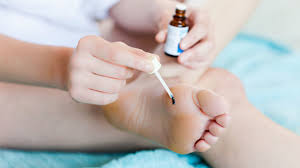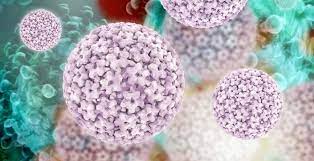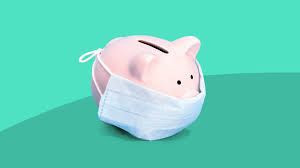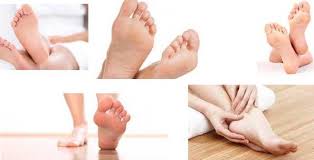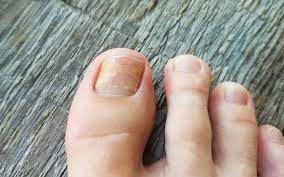Content of the Article
Warts on the feetIt is caused by a viral infection called human papilloma virus (HPV). This virus can enter the skin through cuts.
Also called plantar wart, this type of wart can be painful and the resulting blisters are uncomfortable.
Outpatient wart treatmentIt is possible to do this at home, but it is also necessary to know when to go to the doctor for medical treatment.
Why Do Standing Warts Come Out? What are the Risk Factors?
Standing warts While the HPV virus causes it, there are also risk factors to consider. You are at higher risk of getting plantar warts if:
Having a history of plantar warts
Being a child or a teenager
A weakened immune system
- Walking barefoot frequently, especially in areas susceptible to germs, such as locker rooms.
What Are the Symptoms of Foot Warts?
foot wartsare the most common type of wart that is symptomatic due to their location. toe wartcan feel very similar to having stones in your shoes.
toe wart It usually manifests itself similarly to calluses and is often confused with calluses. callus and foot wart The best way to distinguish between is that it hurts when you squeeze the wart.
Symptoms of warts is as follows:
– A small, fleshy, rough, grainy growth somewhere on the bottom of the foot
– A growth that cuts off the normal lines and ridges on the skin of the foot
– Hard, thickened skin (callous-like) over a well-defined spot on the skin
– Blackheads, also known as wart seeds (these are actually enlarged blood vessels inside the wart)
– Pain or discomfort when standing or walking
How Do Foot Warts Spread?
foot warts It is highly contagious and spreads very easily. There are two main ways that propagation can occur. The first is skin-to-skin contact – for example, hugs or handshakes. The second main way is to contact the skin with a contaminated surface such as a blanket or doorknob.
foot warts Since they are infectious lesions, they can also be spread by contact with the skin shed from another wart on the body or by scratching. Warts can bleed, which is another way of spreading.
How to Prevent Foot Warts?
The risk of foot warts To reduce it, you should avoid contact with warts of others as well as your own. Do not touch warts with bare hands. Keep your feet clean and dry.
Change your socks and shoes every day. Always wear shoes or sandals when walking around public swimming pools or gym showers. These are common areas of exposure to the wart-causing virus.
Foot Warts Statistics and Facts
– Any type of wart is caused by a virus, especially the human papillomavirus or HPV.
– The virus can enter the skin through small cuts or scrapes on the feet.
- foot warts often confused with calluses.
– Plantar warts may appear alone or in a cluster (mosaic warts).
– They are usually flat and grow inward under a hard, thick layer of skin called calluses.
– They tend to grow slowly and can eventually sink into the skin enough to cause discomfort or pain.
– Highly contagious through skin-to-skin contact or contact with an infected surface.
– Usually self-diagnosed and self-treated.
– It can be painful, but not always.
– Laboratory tests or imaging are rarely required.
– It usually resolves within months but can take up to a year or two.
– Children, especially teenagers, are more susceptible to warts than adults.
– People with weakened immune systems, such as the elderly and those taking immunosuppressive drugs, are also more likely to develop warts.
– Some people are immune to warts.
– There is no sure way to prevent the recurrence of any type of wart.
– A wart may reappear near the site of the treated person, appear elsewhere on the skin, or never appear again.
Traditional Treatment of Foot Wart
Most foot wartIt goes away on its own without any treatment as the immune system fights the virus that causes the warts, but this can take up to a year or even two years.
Warts can spread very easily and are uncomfortable and painful.
The most common traditional wart removal treatments are options such as salicylic acid, over-the-counter medications, freezing or surgery.
Here are some traditional foot wart treatment options;
Salicylic Acid/Topical Treatment
Topical, prescription-strength wart remedies containing salicylic acid work by removing the wart layers one by one, and salicylic medication is applied regularly.
Research shows that salicylic acid is more effective when combined with freezing therapy (cryotherapy), so the doctor may also recommend cryotherapy.
Cryotherapy
This treatment can be painful and can take weeks. It destroys warts by freezing them with liquid nitrogen. Cryotherapy causes a blister to form around the wart. When the blister is peeled off, all or part of the wart is peeled off.
Cryotherapy may require repeat treatments every few weeks until the wart is gone for it to be effective. This treatment will be more effective if you follow up with a salicylic acid treatment after the area has healed.
immune therapy
Medicines or solutions are used to stimulate your own immune system to fight viral warts. The doctor may inject a foreign substance (antigen) into the wart or apply the antigen topically.
minor surgery
Warts are cut off using an electric needle. The skin is numbed before this procedure can be painful. Surgery can cause scarring and often foot wartsIt is not used to treat
Laser therapy
Laser surgery uses an intense beam of light or laser to burn and destroy the wart tissue. Evidence on the effectiveness of laser therapy is limited. It can also cause pain and scarring.
Standing Warts Herbal Treatment
Apple cider vinegar for foot warts
Apple cider vinegarIt has a wide variety of health uses, including wart removal. One study states that the anti-infective properties of apple cider vinegar may help reduce plantar warts.
standing warts Apple cider vinegar is used as follows; Apply apple cider vinegar to the affected area twice a day on a cotton ball.
Duct tape
Standing wartsOne way to gradually get rid of it is to use duct tape. Apply a small piece of tape to the affected area and change the tape at least twice a day. (Underfoot warts treatment you may need to change the band more often.)
Warts on the feet The purpose of using duct tape is to help peel off the wart layers. The wart will eventually peel off completely.
Salicylic acid
Salicylic acid is a type of beta hydroxy acid often used to treat acne. It serves to remove dead skin cells, which can sometimes clog pores.
Higher concentrations of salicylic acid are found in wart creams and ointments. These products pour out the skin around the skin little by little, until it finally clears completely.
To benefit from this treatment, use salicylic acid daily, twice a day. standing wartYou must apply. It may also be helpful to prepare the affected area by soaking the affected area in warm water for 10 minutes before applying the acid.
It may take several weeks for the warts to disappear completely.
Tea tree oil
Tea tree oilis used as a topical antiseptic. It is primarily used for fungal infections, wounds and acne.
To try this remedy, apply a small amount of tea tree oil diluted with olive or almond oil twice daily to the affected area.
Milk thistle
Milk thistle is another herbal remedy that can help relieve skin conditions. Unlike tea tree oil, milk thistle has antiviral properties. You can apply the diluted milk thistle extract to your warts twice a day.
Standing wart freezing treatment-Freezing sprays
Besides salicylic acid, you can also buy "freezing sprays" for plantar warts at the pharmacy. These liquid nitrogen-containing products are designed to mimic the effects of cryotherapy administered by a doctor.
The spray works by creating a blistering injury that adheres to the wart. When the blister heals, the wart will disappear.
To use the freezing spray, distribute the product directly on your warts for up to 20 seconds. Repeat as needed. The bubble will form and fall off in about a week. If the wart is still there after this time, repeat the treatment.
When should he go to the doctor?
Persistent or recurring despite home treatment foot warts It is necessary to go to the doctor. Warts can be treated with cryotherapy here. He may also recommend prescription foot creams to get rid of warts.
It is necessary to visit a doctor before home treatment if:
- Diabetes
A generally weak immune system
HIV or AIDS
Brown or black warts (these can be cancerous)
Plantar warts varying in color and size
Severe discomfort due to warts
Changes in walking



